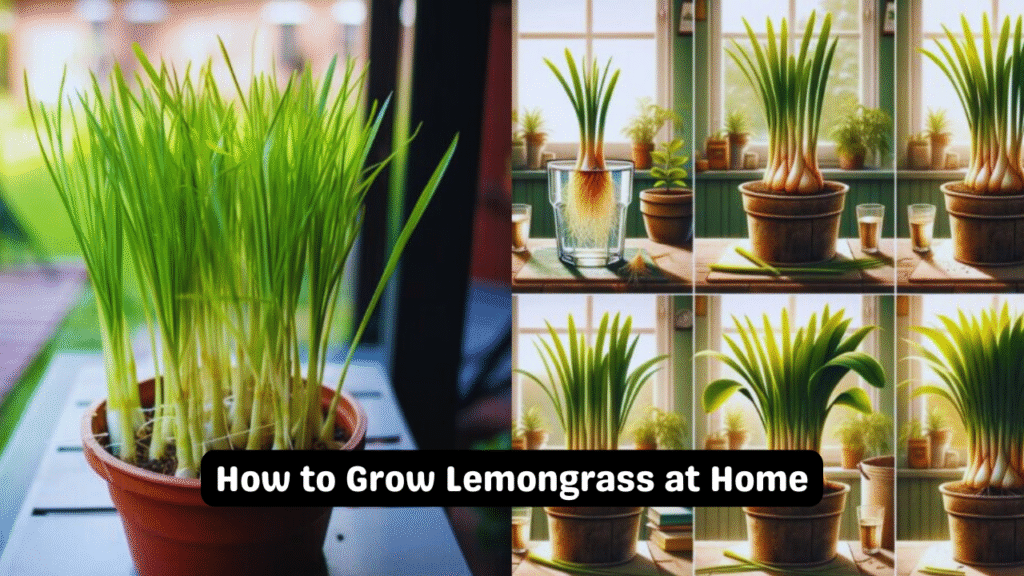Lemongrass (Cymbopogon citratus) is more than just a fragrant herb — it’s a kitchen staple in Thai, Vietnamese, and Indian cooking, a natural bug repellent, and a source for teas and essential oils. The best part? You can grow it right at home! Whether you’re working with a backyard or a sunny windowsill, this guide will walk you through exactly how to grow lemongrass successfully.
Step 1: Know Your Lemongrass
There are two main types:
- West Indian Lemongrass (Cymbopogon citratus): Best for cooking, with a strong lemony flavor.
- East Indian Lemongrass (Cymbopogon flexuosus): Often used in essential oils.
Pick the variety that suits your goals.
Step 2: Choose the Right Spot
Lemongrass thrives in full sun, needing at least 6–8 hours of sunlight daily.
- Warm climate? Plant directly in your garden.
- Cold winters? Use containers so you can move them indoors before frost hits.
Step 3: Prep Your Soil
Lemongrass prefers:
- Well-drained soil
- pH between 6.0 and 7.5
Use a mix of potting soil with sand or perlite for improved drainage.
Step 4: Plant It Properly
You can start lemongrass from:
- Seeds
- Store-bought stalks (with roots)
- Divisions from mature plants
Space plants 24 inches apart in the garden. If using containers, ensure proper drainage.
Step 5: Water Consistently
Keep soil moist but not soggy. Water deeply when the top inch feels dry. Avoid overwatering to prevent root rot.
Step 6: Fertilize for Growth
Feed every 4–6 weeks during spring and summer using a balanced, slow-release fertilizer. Avoid overdoing nitrogen—it can lead to more leaves but less flavor.
Step 7: Harvest Like a Pro
- Harvest stalks when they’re about ½ inch thick
- Cut at ground level using a sharp knife
- Leave a few inches behind to allow regrowth
The lower stalk is where the flavor’s at!
Step 8: Control Pests (If Needed)
Lemongrass is generally hardy but watch for:
- Aphids
- Mealybugs
Spray with neem oil or rinse pests off with water if needed.
Step 9: Overwinter Your Plant
In cooler zones, bring containers indoors before the first frost. Place near a sunny window and reduce watering in winter. Trim off dead leaves to encourage spring regrowth.
Conclusion

Growing lemongrass at home is simple, sustainable, and seriously satisfying. Whether you use it for cooking, tea, or its wellness benefits, having a fresh supply in your own space is a total game-changer. Follow these steps and you’ll be enjoying this citrusy, tropical herb all year long.




